2023 Update… I love the look of black mulch and I’ve used it for years to enhance all of my landscaping beds, but it’s frankly becoming a bit too much maintenance. And a bit too expensive. I’ve come to realize, I now have to try to find the perfect ground cover (among so many choices) that can slowly take over certain well-contained large landscape areas on my property – and I’m frankly struggling with the decision.
Slightly Addicted to Landscaping
Admittedly, I may have gone a little overboard – adding landscape beds everywhere I could with each passing year, But when done right, ornamental landscaping can be so striking and add so much to the look, feel, enjoyment and value of a home. Plus, I genuinely find both the planning and pruning a lot of fun – it’s a creative challenge to start with a cost-effective and beautiful landscape design for the present, and anticipate how to carefully shape my trees, shrubs and ornamental grasses over time to grow into each other for the best long-term effect. This is really fun, gratifying and relaxing to do, right? Well – whether you agree with that or not, the mulch maintenance definitely got away from me.
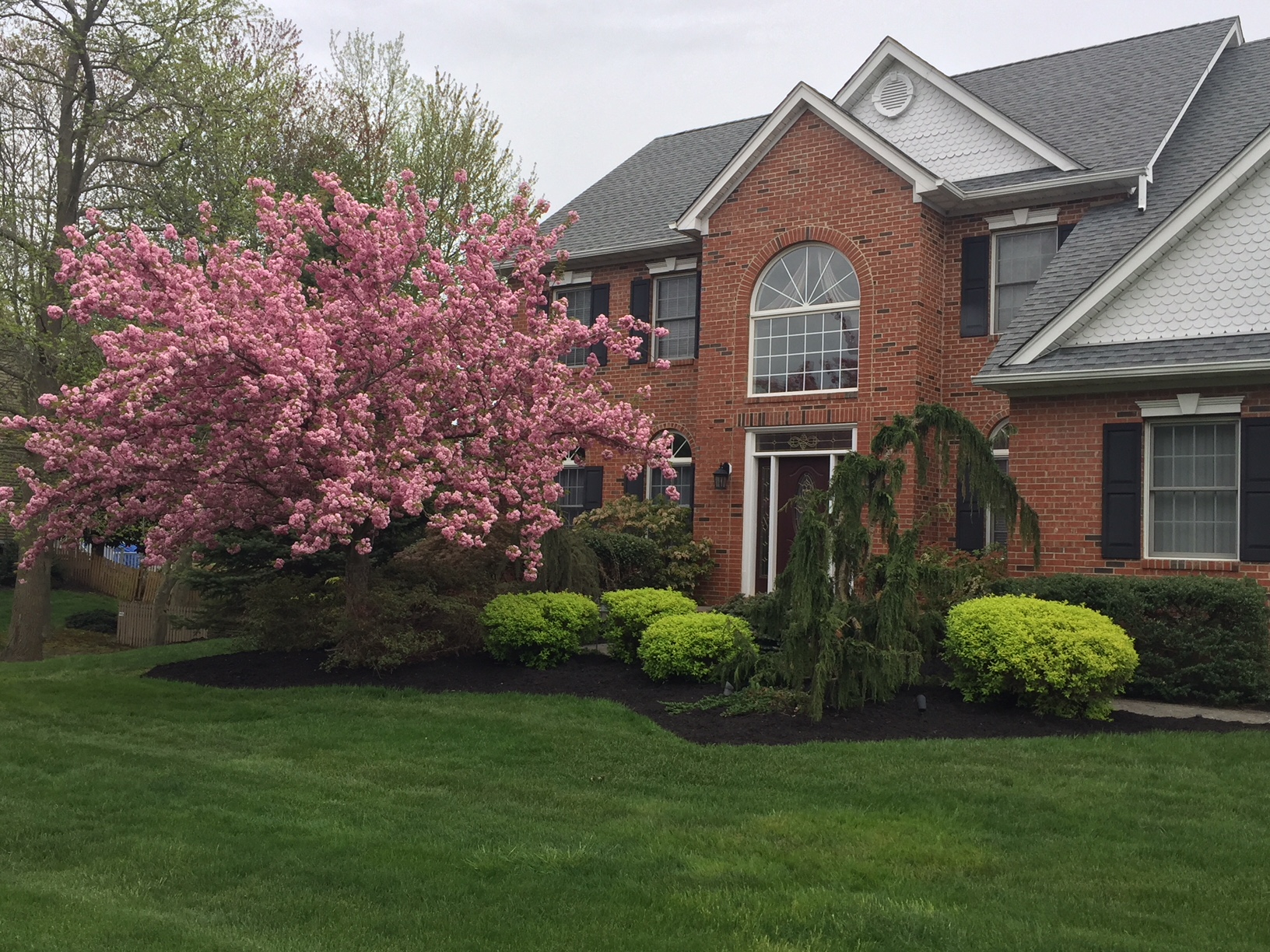
Landscape Mulching – Out of Control
When we started out in our first home, I would order a delivery of 3-4 yards of mulch every year or two. I’d get out my allergy masks and spend an afternoon refreshing the beds. Here’s a little less than a single yard of dyed black mulch…
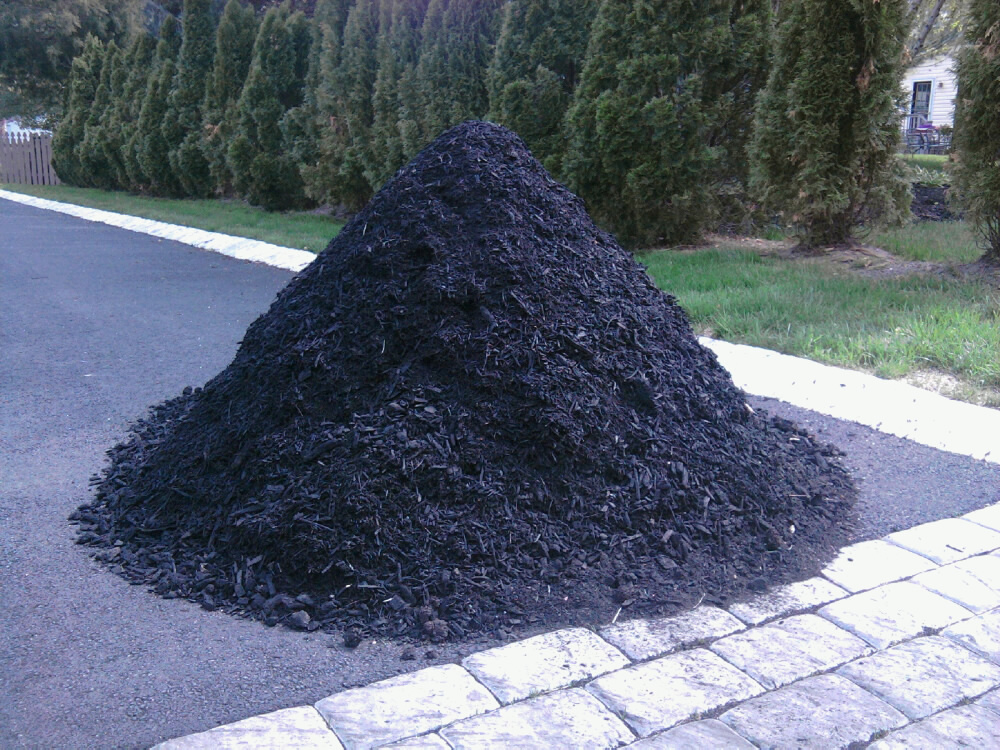
Three years ago, I decided to do some Belgian Block work in my backyard. The real goal was to create full perimeter landscaping so I wouldn’t need to replace the cedar fence when it started to rot – I’d have a “natural” fence line. The Belgian Block was expensive, but I love stone work and so it was sort of an indulgence. Once the stones and all of my trees and shrubs were in place, though, we had to fill this in – and mulch is very healthy for new plantings. Plus, it always looks great when it’s fresh.
In the first shot, you can see a row of Leyland Cypress. These grow really fast, and I was hoping they would cover up the mulch before I had to replace it. They didn’t.
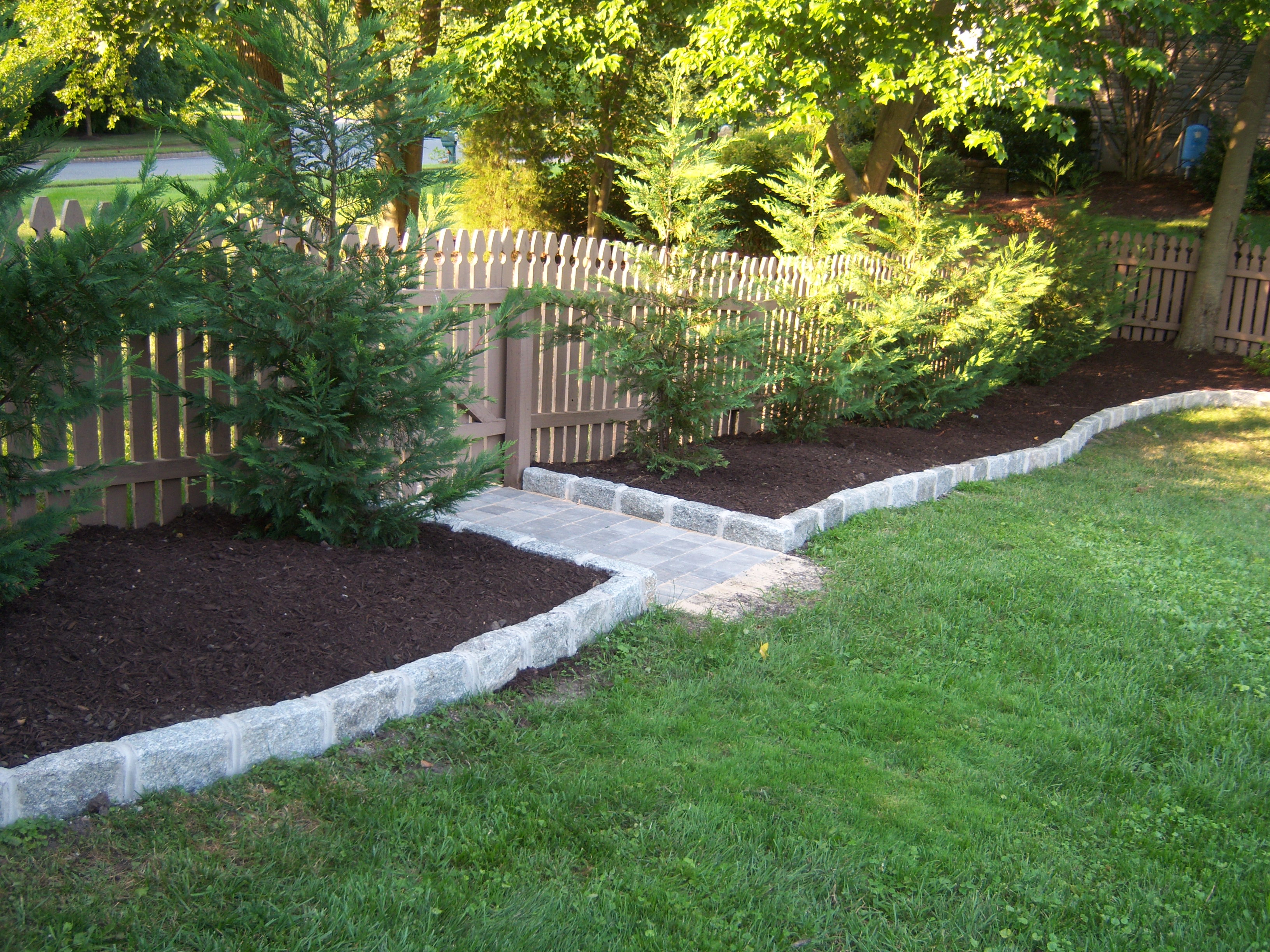
I also planted Golden Thread Cypress (probably close to 25 in total), some of which are shown in the photo that follows. These are one of my favorite landscape shrubs. They remain yellow if in full sun. They tend toward green if planted in shade. And after a few years, they grow very fast and take on a characteristic “Cousin It” shape.
I know that these will eventually get very close to touching each other and will be much taller than the picket fence you can see. And I also know they’ll overtake the mulch completely. Have they taken it over so far? They haven’t.
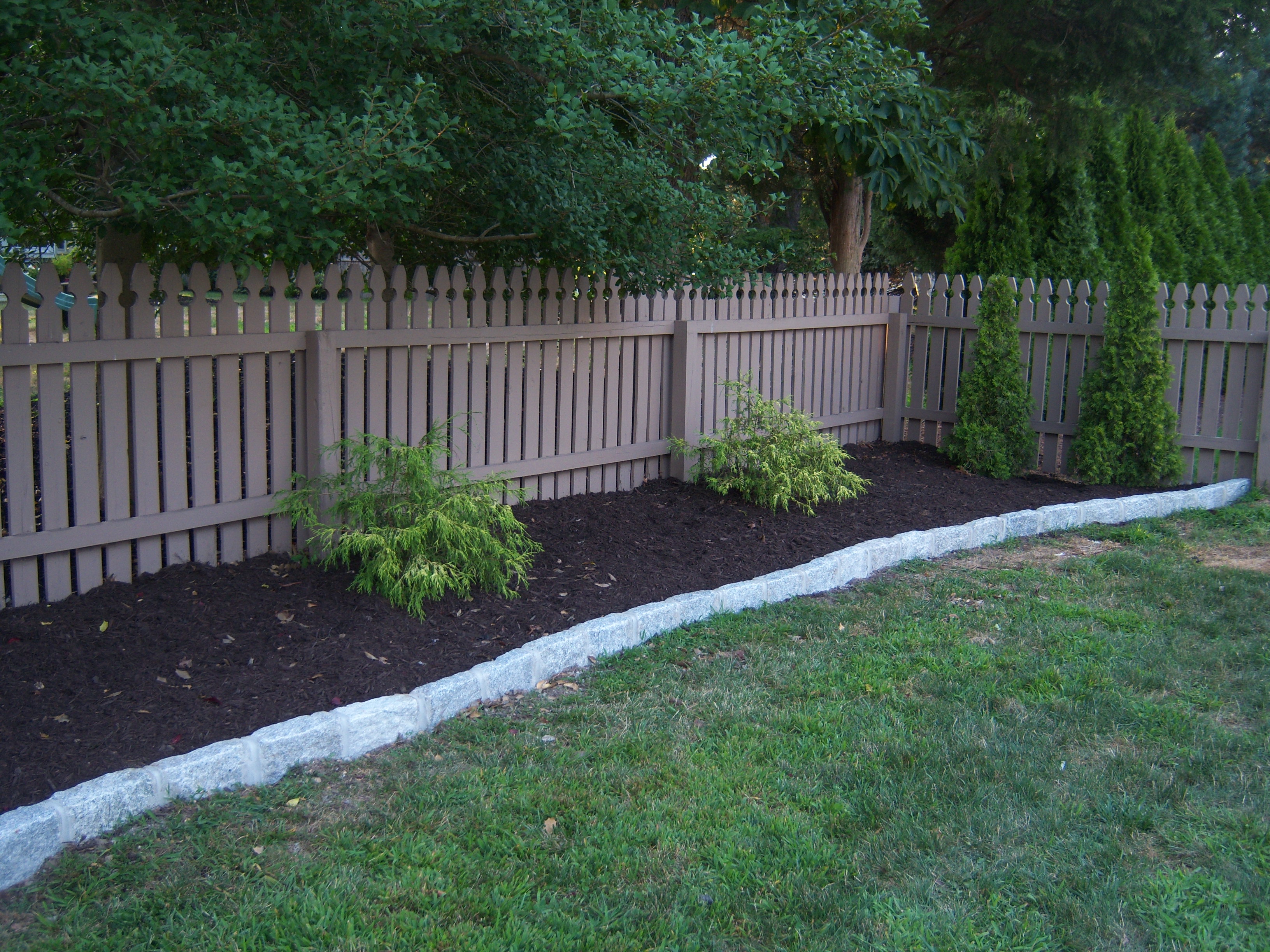
So, I called a local landscaper I’ve worked with for years – I needed to re-mulch this perimeter one last time and I just couldn’t do it myself again. (As this is MUCH more than 3-4 yards of mulch.) Furthermore, I have a number of other landscape beds on my property. Best to take all the pain at once.
Heavy Equipment & Truckloads of Mulch
How much mulch did it take to refresh the beds on my property in total? Close to 30. That’s insane and completely unsustainable. In fact, my landscaper literally brought in a mini bulldozer to make this happen.
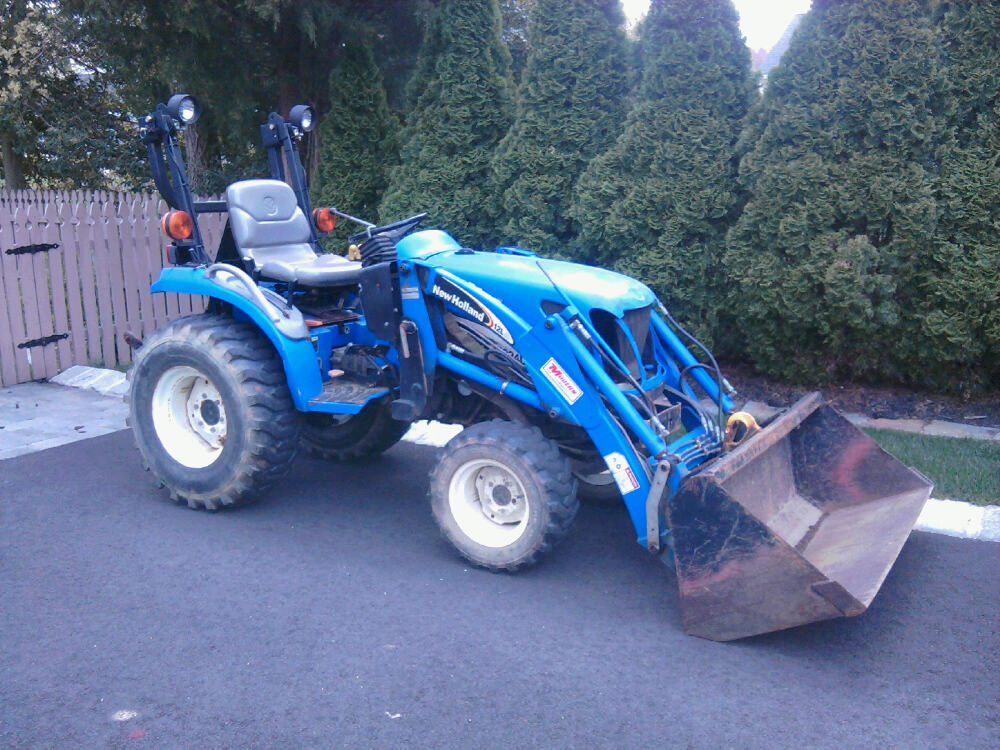
I had been asking him about ground cover thoughts for about a year; it’s definitely something I’ll do myself. And the funniest part of this whole recent mulch effort was toward the end when he said to me something like, “Yeah – I really think you should get some ground cover back there. This is just too much work.”
It’s definitely time now.
I’ll let the new mulch look great for a year, but I have to find the right ground cover!
Ground Cover Plants: Initial Thoughts & Research
I’ve been thinking about this for a while, of course, and what I do know are the following key items so far. There’s not quite enough here for me to make a decision yet, but we’re getting there…
Ground Cover for Shade and Sun
My perimeter landscaping has areas in full shade almost all day, which other areas have some very significant periods of full sun. I really want one ground cover for a uniform homogeneous look, and so it’s going to have to be able to accommodate and thrive equally well in both sun and shade, if that’s at all feasible.
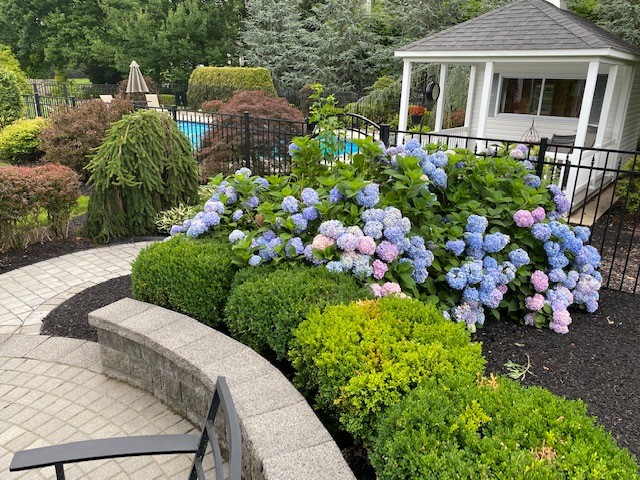
English Ivy Looks Great, But No Way
Ivy ground cover always looks terrific – the deep green and the dense coverage. Frankly, this is what came immediately to mind; it would quickly cover the mulch, it could climb the fence (that would look cool too), and I would simply use my weed wacker to keep it off the Belgian Block. (This is something I do every week anyway.) Could look awesome! I don’t know just how many varieties of ivy there are to choose from – but my first search was for English Ivy, and I didn’t realize just how aggressive this plant really is.
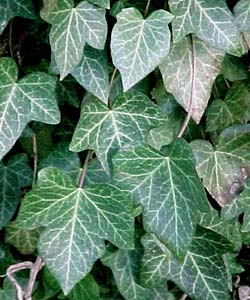
How aggressive? Sounds like it could very possibly kill my landscaping trees and shrubs in the end. And to put it mildly – that would be bad. There’s a great website I found that features English Ivy and categorizes it as a serious threat to the “native flora, fauna and natural ecosystems of the United States.” You can click the link in the previous sentence if you want to take a look for yourself.
Maybe in my ongoing research, I’ll find an ivy ground cover variety that isn’t as aggressive as English Ivy, but for the moment… No way.
Periwinkle Ground Cover
Periwinkle ground cover (which, best I can tell, seems to also go by the names of Myrtle and Vinca minor) looks like a really good possibility so far. Here’s a photo I took of a small patch recently:
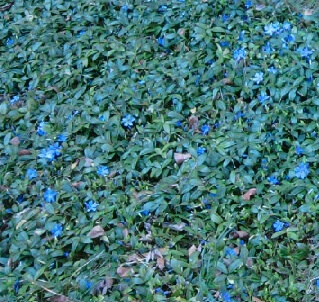
According to a write-up from the University of Illinois, this could work in both sun and dense shade, it’s tight to the ground and has shiny evergreen foliage with blue flowers in the spring. Sounds really good!
Only thing that concerns me here is that I found a campus-wide landscape area nearby, subject to both sun and shade, and it actually looked like this…
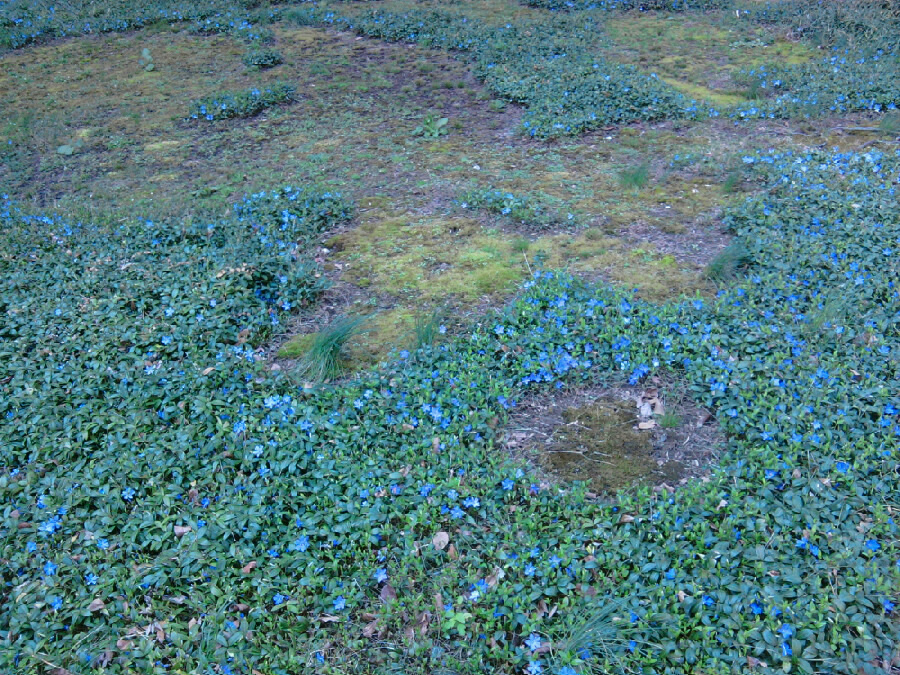
I wouldn’t call this uniform. In fact, this looks terrible! Definitely need to research this more, but again, I do think Periwinkle ground cover sounds like a great possibility.
Ground Cover Plant Seeds Feasible?
Call me frugal if you like, but for something like this I’m in no rush (as I have fresh mulch at the moment) – and as much as I love buying landscaping supplies and plants, I think seeds might be a great option for me if I can find out exactly how to plant these and have them germinate properly.
I have this image in my mind, though… I purchase (Periwinkle?) ground cover seeds for a very low cost, I sprinkle them into my mulch in the early fall – and by next spring, I have the beginnings of a ground cover starting to weave. It might take 2-3 years to really take hold – but it’s on its way with minimal subsequent effort from me.
Is there any chance it could it actually be this easy??
The Ground Cover Research Continues
It doesn’t take much effort to find lots of websites that tout the benefits of about “one billion” different types of ground cover. Varieties of monkey grass, sweet woodruff, juniper, golden creeping sedum, creeping thyme, lambs ear – and many others pop right up.
But which will *really* be best in my sun and shade environment?
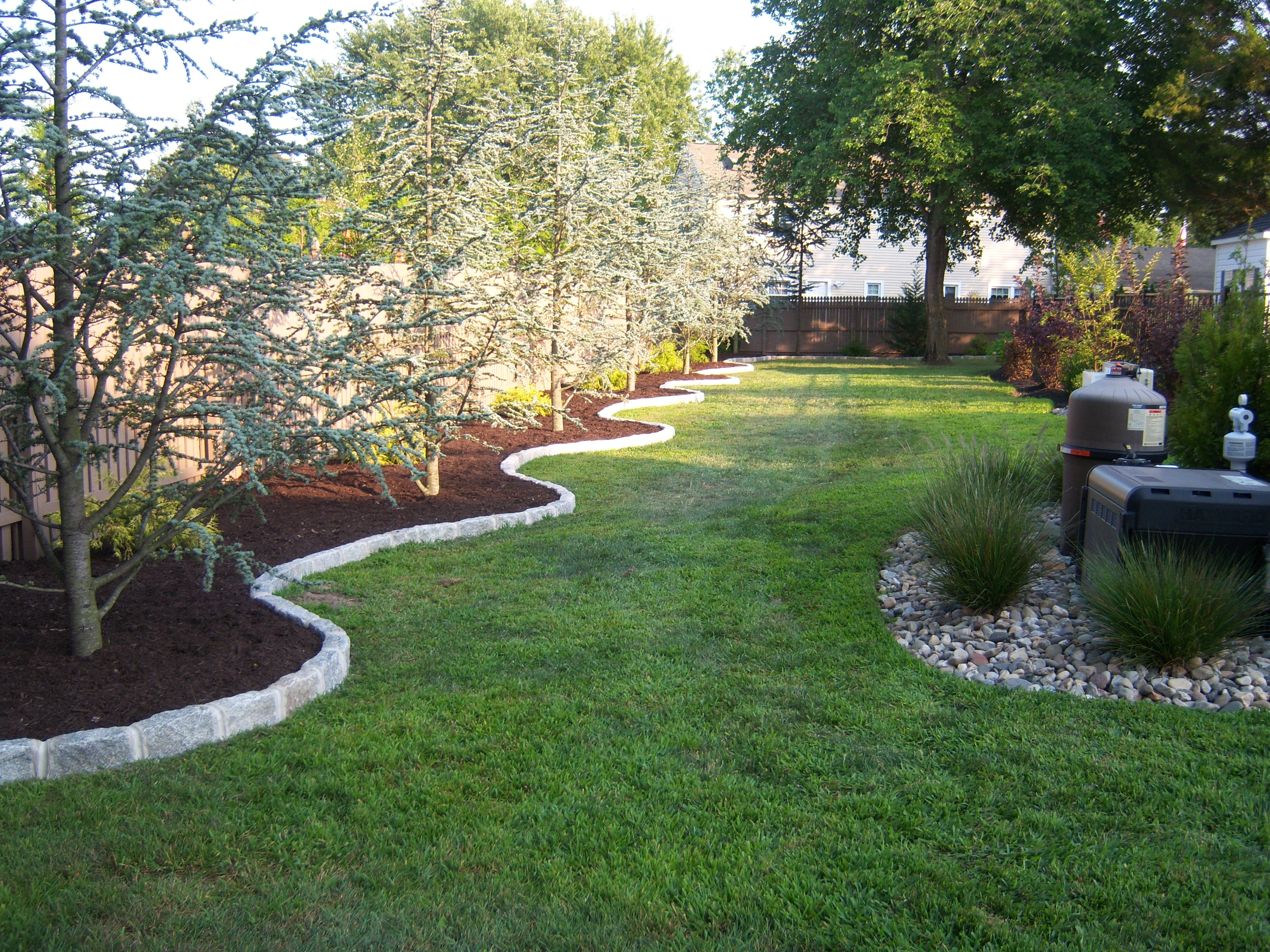
Which will create a truly uniform coverage? Which will be cheapest and lowest maintenance to grow? And perhaps most importantly – where can I see (for myself) a real example of this somewhere on or near the New Jersey shore so I can be truly confident that this will work for me? The Periwinkle example I mentioned (and showed) earlier was most disheartening – that one sounded perfect, but the results I saw [so far] were far from it.
Does anyone have any further thoughts, suggestions or insights they can share… or better yet, maybe even some Jersey Shore large area ground cover photos?

That one day a year when the cherry blossom petals become… ‘pink mulch!’
I love it though! So pretty.
What do you think about using an evergreen sedum as a groundcover? I don’t know if there’s one that will help with weed suppression, but it handles freezes and spread very quickly I grow Lemon Ball sedum and it covers densely and keeps its beautiful yellow/chartreuse color all year. Plus, it blooms yellow for the pollinators. It goes dormant in the winter, it seems, then with the warmth of spring, starts up again.
I never gave that a thought before, John, but it sounds like a really interesting idea as long as its appropriate for the planting zone in question. (And, of course, soil conditions and the like too.) But for me, ground cover is all about the tight ornate look, robustness and the ‘spreading quickly’ facet. Really intriguing thought here – thanks for sending this in!
By chance, do you have a few photos you can send via the contact page? If so – I’ll pop them right into your comment here over the coming days.
Lori one (monkey grass). Or dwarf Black Mondo Grass would be gorgeous. Just let it take over the mulch.
Thanks so much Beth!
I have some Monkey Grasses by my pool (Liriope mostly) – and even there, they’re taking over a bit. Never considered a monkey grass variety for the borders as well. And as for Black Mondo Grass – I frankly hadn’t heard of that one.
I put two Amazon links in my text above – and there are photos below too.
Really appreciate the suggestions and insights!!
I liked your article on spider mites. Have you ever thought of introducing lady bugs or plants that attract like zizia, achillea and pycnanthemum. I switched from mulch a number of years ago for the reasons you mentioned. Our city offers it for free, but the quality is questionable. If you do a lot of trimming, maybe create your own mulch with a shredder. Do you compost? I have had success with these groundcovers in zone 5: pachysandra (1), sedum (2), archangel (3), and geranium (4). I love the smell of alyssum. It is an annual, but I don’t clean up the plants until the next spring, and there are many new plants. Astilbe might be considered a ground cover because it spreads out. Lily of the valley, forget-me-not grow like crazy. Dianthus slowly died out on me. A helpful site is gardenia.net. Check your state’s extension office to verify invasive species. Do you get japanese beetles in your yard?
1) https://en.wikipedia.org/wiki/Pachysandra
2) https://www.gardenia.net/plant/sedum-spurium-dragons-blood
https://www.monrovia.com/angelina-stonecrop.html
3) https://en.wikipedia.org/wiki/Lamium_galeobdolon
4) https://www.gardenia.net/plant/geranium-cantabrigiense-karmina
Hey Marty –
Thanks so much for your wonderfully-informative comment here! We also get free mulch from our township, and I received a truckload in the past – but exactly as you said above: questionable quality. (Some plastic bag shreds, some sticks, some assorted junk in there as well.) The links you provided are terrific, though, and I’m super happy to add this to this comment thread; there are several options you suggest that I wasn’t aware of – and can surely offer potential help to lots of folks!!
Oh, and Japanese beetles in my yard? DEFINITELY.
(Bats too. But the bats are pretty cool – I really like the bats.)
We have periwinkle. If you leave it in a bed and don’t mow it, It gets about 7 or 8 inches tall. Every year it fills in more and is quite dense.
The photo of the university campus showed what happens to *anything* planted there – grass, clover, periwinkle, weeds…. it doesn’t grow. That’s because there’s something wrong underneath the topsoil, not because there’s something wrong with the plants.
You’re going to be planting in beds with nice soil. As long as the conditions are suited to the plant, any plant will grow well.
Regarding that campus photo, Susan – I’m sure you’re right… that campus landscape is not highly maintained, and I was there when it was all constructed as well: I have no recollection of a topsoil application.
In addition, since writing this article, I’ve come across periwinkle many times growing natively – even just off of hiking trails and near lakes by me in New Jersey. It seems to be well suited, if not indigenous, to this area. Appreciate your insights!
I am in the same predicament as you. So many beds, mulch is getting too expensive. I have found the answer in pachysandra. They will tell you it only grows in shade, but in my experience I have found that in will also grow in full sun. It comes in flats, takes a few years but will spread to form a beautiful, dense, green cover. It can be a little invasive, grows on runners, but it is nowhere near as bad as ivy. A bit of weed wacking keeps it in check. It stays green all year round.
Definitely, Lana – I’ve been a long-fan of pachysandra as well. My Mom used to have beds of this at her house for years. Have to say, I’ve been unable to attend to this effort, and I’ll be carrying my current mulch into next season for sure – during which I’ll solidify the ground cover. (I surely won’t be buying any more mulch.) Thanks for the great suggestion!
Hello there, don’t know where you are in your plan for ground cover, but I have found Blue Rug Juniper to work very well for me. It’s low growing, evergreen, and can help w/ erosion if needed. Good luck!
Thanks Cindy – the Blue Rug Juniper is a great suggestion. I have a few in more localized areas: they’re really tight to the ground and very dense – truly almost carpet-like. I hadn’t considered this as my mulch areas were so large, but it’s definitely a great idea. And fall is a great time for planting these as well!
Hi Mark
Ground cover is a brilliant idea! I have a patch at the front of the house which is growing camellias and all year round we get this horrible little flat weed that grows on top of the mulch. So the problem is that the mulch has pretty much broken down and now there is some lovely soil for it to grow in, but if I look for some close growing little ground covers that will do the trick nicely as I have been putting off purchasing mulch, because as you find, it is expensive plus it is a lot of work to spread it around the garden!
Yeah – I’d be Okay with *never* having to spread mulch ever again… ;-)
I’m definitely leaning toward Alyssum. I found a local distributor of seeds, and I think I’m going to visit in person mid-summer so I can potentially plant in early fall. I really want to see dense patches of the ground cover in my area, though, before I take the plunge. I just have to know for certain that I’m making the right choice. Thanks, Jan!
Just a quick word of thanks to Debbie and RadicalFarmerGal for their insights on Periwinkle and Alyssum on the GardenTenders website, which I frequent as well. The short summary is that it sounds like Periwinkle might always be a bit sparse – but Alyssum could have a chance at choking out the weeds completely, if I can find a variety that’s shade tolerant.
Does anyone local have any experience with varieties of Alyssum?